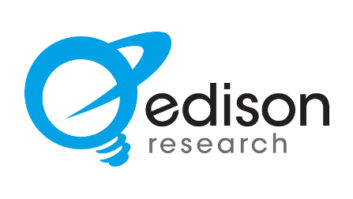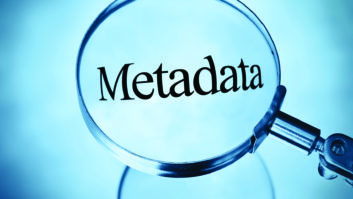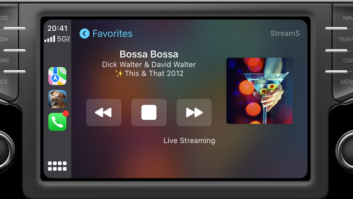As part of Radio World’s national coverage of HD Radio deployment I was asked to monitor what was actually on the air in the Boston area. I had two opportunities to do so.
On March 21 my family drove to Boston to attend a bridal shower. I equipped our 2004 Subaru Outback with a tabletop Boston Acoustics BA Receptor HD radio, sine wave inverter and magnet mount whip antenna.
The radio is an excellent performer when equipped with a good outdoor antenna. On the first pass I did not consult the Ibiquity station chart, instead opting simply to scan the band to discover HD Radio signals.

The author in his test vehicle. I returned to Boston on Aug. 1 for the actual wedding, held outdoors on the steps of Boston’s old City Hall. During that trip I also conducted a second listening test. I once again used the same BA Receptor setup in my car but also added the newly released Best Buy Insignia HD armband FM radio to see if it is a practical addition to HD FM listening.
Although I monitored 28 HD stations in six communities, this report is limited to 21 that make up the greater Boston area market, including WAAF and WICN in Worcester, Mass. Sixteen of the 21 are multicasting. Four stations, three of them owned by CBS Radio, are operating in extended mode with three HD streams apiece.
(When looking at the chart on page XX, note that subsequent to my test drives, CBS changed formats for two stations. WBMX at 98.5 MHz changed calls to WBZ(FM) and now airs sports on its HD1 and alternative rock on HD2 and simulcasts WBZ(AM) on its HD3. WBCN at 104.1 MHz took the WBMX calls and changed to a Hot AC format on the main, picking up the ’80s Channel on its HD2 and Psychic Radio on its HD3.
Also note that my tests focused on the FM dial. According to iBiquity, four area stations are on in AM HD Radio: WNNW on 800 kHz, owned by Costa Eagle Broadcasting; WBZ on 1030 kHz, owned by CBS Radio; WMKI on 1260 kHz, owned by Radio Disney and WXKS on 1430 kHz, owned by Clear Channel.)
I did not monitor AM stations because the BA Receptor cannot mate its AM input to a mobile antenna.
Fun, unusual programming
Among the factors I was looking for was whether the list of stations for Boston provided to consumers on the Ibiquity Web site is accurate; I found that it was.
I further found that most of the SPS program services sounded automated or voice tracked. In one instance, on WERS at Emerson College, the HD2 was a simulcast of their FM/HD1 programming with an additional 20-second latency delay.
Most of the HD1 signals were synchronized well enough to prevent audible echo when blending in and out of analog, but most exhibited a slight comb filter effect and level dip. That shows how difficult it is to get the diversity delay spot on and to hold it without frequent adjustments.
On most stations the HD2 audio was of slightly lower quality than HD1. I could hear the difference, and while it was not a show stopper, it was slightly disappointing. Voice alone on HD3 inevitably sounded irritating, with typical lossy algorithm artifacts and a swishy sound.
Curiously, I found one station, again WERS, where the HD1 was significantly louder than their analog FM! How’d they do that?
On Sunday Aug. 2, when there may have been few if any staff on duty, WBMX HD2, which should have been “Classic Hits,” was reduced to dead air with a distinctly tuneless AC hum. That’ll sure help their Arbitrons.
There were a few adventurous formats on the SPS channels worth the effort to tune in.
For example WBMX was running the eclectic talk format on HD3 called “Psychic Radio.” I caught a program dispensing advice about mental health issues.
Greater Media was adventurous with WTKK by putting talk radio on their FM/HD1 and mostly Irish folk music on their HD2 channel, promoted as “The Boston Irish Channel.”
WODS, also owned by CBS, had “Soft Hits — Love Songs” on HD2 and a simulcast of WBZ all-news on HD3. The rebroadcast of the AM all-news station sounded rather clipped and distorted.
Program Service Data and RDS were well implemented in Boston. Most stations displayed now playing information with little latency. Some added fill information during stop-sets such as station slogan, temperature or a “save radio” campaign.
HD vs. FM reception
(click thumbnail)How does digital at 1/100 the power compare to FM? Most stations that have converted to HD are a bit disappointed when comparing our FM reception to HD Radio at the outer reaches of our city-grade signal contours. When FM starts to get noisy, HD tends to drop out.
While that may equate as technically equal, it isn’t when you consider that the ear can help mask and the brain ignore a lot of that noise. Digital must be able to hold a radio well into the analog FM noise to provide something akin to what we’re accustomed to for coverage.
Within 10 to 20 miles of the Needham Heights towers or The Prudential building in downtown Boston I could hold onto HD carriers with few or no dropouts. But moving a few miles further out along Route 2 put the kabosh on most of the HD carriers in the Boston market.
Insignia HD
To check reception in downtown Boston and to test the concept of a battery portable HD Radio receiver that did not run hot enough to scorch your hand, I brought along a brand-new miniature Insignia HD shirt pocket radio. Most miniature pocket radios fall far short of the mark with FM reception.
My trusty old Sony AM-FM Stereo Walkman SRF-A1 is very deaf. When I mow my lawn it constantly mutes on even the strongest signals, none of which are city-grade at my rural home.
So I was pleasantly surprised to find the sensitivity of the Insignia to be far greater. It not only held the strong FM signals flawlessly, it also held HD lock much of the time.
From my room on the seventh floor of the Boston Park Plaza hotel, most stations were rock-solid in HD. The same was noted while walking through the park.
Not surprisingly, several of the stations operating from towers not in town were problematic. Not only would I lose HD lock, I’d lose FM analog too!
The position of the headphone cord/antenna was critical. The Insignia was being overloaded by signals from “The Pru.” Scrunching up the cord into my hand helped as it reduced overall RF. A quick check of the FCC database for the adversely affected stations showed them to be operating from the suburbs and at much lower power than the in city stations. Still, under those demanding circumstances I have to give the Insignia a thumb’s up.
The Insignia radio has a wonderful feature. One display mode provides three lines of Program Service Data, one for each HD channel. You can see at a glance what’s playing on all three and use up/down buttons to select one instantly. That more closely emulates what the digital crowd expects from their multi-media players.
Imagine if you could scroll through a list of all of the PSD across the entire FM/HD band without having to retune your radio. That would be similar to what DTV tuners now provide for TV viewers.
Ira Wilner is chief engineer of the Monadnock Radio Group in Keene, N.H. where he gets to play with four HD Radio-equipped radio stations missing from this story because they are not part of the Boston metro.
The author used a list posted at HDRadio.com of stations believed to be on the air; the list is maintained by iBiquity based on info from stations and its own listening posts. It invites updates to station [email protected].
Wish to do a drive-around in your market? Write to[email protected].













